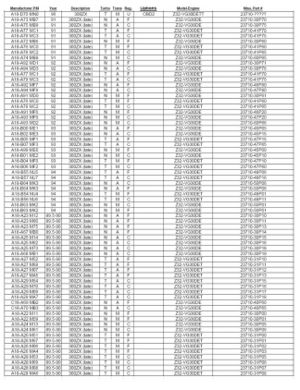ECU
The Engine Control Unit (ECU), Electronic Concentrated Control System (ECCS), or Engine Control Module (ECM) is the primary engine-controlling computer in a car utilizing electronic fuel injection. They're made up of various electrical components and often read a myriad of engine sensors to read various parameters, such as engine speed, engine temperature, exhaust gas oxygen levels, throttle position, and more. Meanwhile, the ECU controls various other engine components and parameters such as fuel injectors and ignition timing. Most ECUs also feature some sort of onboard diagnostics.
Contents
On Z32s
There are numerous part numbers and versions of the ECU used in the Z32 (see the Identification Chart below). For all intents and purposes, the following 12 exist.
| |
Non-Turbo |
Twin Turbo | ||
| Federal |
M/T |
A/T |
M/T |
A/T |
| California |
M/T |
A/T |
M/T |
A/T |
| OBDII |
M/T |
A/T |
M/T |
A/T |
While they all perform the same basic functions, they are not cross-compatible with few exceptions. For example, an automatic ECU can be used on a manual-transmission car (it simply throws a code for missing the Transmission Control Module), but the reverse is not true. Additionally, ECUs should never be switched between aspiration models (ie using an NA ECU in a TT or vice-versa). TT swaps, however, often use a socketed (see EPROMs below) NA ECU with a TT program.
8 bit vs 16 bit
In addition to these model differences, ECUs saw an internal revision during the Z32's production: a switch from 8bit to 16bit.
| |
Non-Turbo |
Twin Turbo |
| 8-bit |
1990-1992 |
1990-1994 |
| 16-bit |
1993+ |
1995+ |
Upgrades & EPROMs
For most enthusiasts, the primary point of interest in the ECU is the EPROM--an integrated circuit that contains information the ECU uses to control fuel injection, ignition timing, speed and RPM limiters, and other parameters. In most cases, when one speaks of an "upgraded ECU" they are referring to an original ECU which has had the original EPROM removed and replaced with a socket, into which a new EPROM (with different programming) can be installed. Certain upgrades and modifications, such as changing fuel injectors for higher-flowing models, require an ECU upgrade (or, more specifically, EPROM reprogramming).
Extreme Modifications
While a stock ECU or an upgraded ECU is enough for most owners, some enthusiasts will modify their ECU more heavily to suit their needs, or replace it outright. Specialty Z sells ECU upgrades that replace the stock 28pin (8-bit only) EPROM with a daughterboard and 30-pin EPROM, along with a ribbon cable that leads to an external component (often disguised as a factory clock) which allows the user to switch "tunes" on the fly. This is handy for owners who frequently run different octanes or race gas. Ash-Spec also sells heavily modified ECUs which incorporate an electric dial that allows the user to change the boost pressure using the factory wastegate solenoids. Nistune sells a daughterboard that replaces the 28-bit EPROM with reprogrammable memory and a USB connector, allowing users to connect a computer directly to their ECU and modify various parameters (such as fuel and ignition timing) in real time.
For a higher price, users can also replace their ECU outright with a stand-alone ECU. An aftermarket computer that fulfills all the same functions (and often more) that the original ECU would normally handle. Stand-alone units are used for their flexibility with certain sensors or engine components, as well as their ability to be completely customized from a software standpoint.
Identification Chart
Thanks to JWT (and colocomp of TT.net), the following chart is available to help you identify each ECU by reading the label on the outside.

